Description
[Following the first day of Eric Clapton’s first visit to Japan, we also unearthed a new unreleased master of the Budokan performance in Japan the following year in 1975!] We recently released the audience source new master “BUDOKAN 1974 1ST NIGHT (2CD)” of Eric Clapton’s first visit to Japan, the first day of his first visit to Japan, the Nippon Budokan performance on October 31, 1974, and it was very well received. We realized that new masters are attractive to enthusiasts. At that time, we also obtained the master cassette of the first day of the 1975 Budokan performance by the person who recorded “BUDOKAN 1974 1ST NIGHT”! This master is also a mono cassette tape recording, but it is in very good condition, the pitch is normal, and it is a completely new master that is different from all the previously released versions, including our release. When I listened to this master, like in 1974, the sound field was very rich, the sound (phase) was spread, and the sound quality was clear and easy to listen to. The sound quality is as high as the “Budokan 1975 First Night”, which is said to be the best of the day’s already released albums, and Clapton’s guitar is quite on, giving a dazzling sound quality that conveys his enthusiasm. However, just like the master on the first day of the Budokan in 1974, there were some cuts where the recorder stopped the tape between songs to save tape, and in the second half of the encore, the tape finally ran out and was not recorded. However, in order to achieve our trusted release standards, the cuts between songs and the missing part at the end were compensated for with the best already released “Budokan 1975 First Night”, and the parts that were still missing were compensated for with another already released album “BUDOKAN 1975 1ST NIGHT: Unreleased Master (2CD)”, making it the longest and best version of the day. There is almost no discomfort. This makes the document of this day perfect. Please check out the quality of the first-generation master, which was made into a CD directly from the master cassette of the recorder, and is the first time it has appeared in Japan. … 47 years have passed since then. Clapton was 30 years old at the time. A superstar who returned to Japan the previous year. Where was his intention? Of course, there is no way he would have any bad feelings towards the people of his longing country, who welcomed him more than he expected. Indeed, the re-performance, which Clapton attended because he wanted to deliver music to the people of this country once again, was a surprise. This board, which contains the master that first appeared in Japan, can be said to be the new standard of the day. [The truth of the performance that cleared the stigma of the previous year and engraved Clapton’s status in Japanese rock history] As mentioned in the release review of “BUDOKAN 1974 1ST NIGHT”, the previous year’s performance was misunderstood and misrepresented because it was a tour that was carried out while drunk in order to survive the tour in a state of sickness from drug addiction. I don’t think Clapton himself was aware of that evaluation, but even though he was still drinking heavily at the time, Clapton looked fearless when he set foot on Japanese soil again. The previous year he made a miraculous first visit to Japan, and in the same year he was voted number one in the guitarist category in the music magazine Music Life’s popularity poll, so this was a return to Japan performance that took place amidst great popularity. The fans who rushed to the Budokan were waiting with high expectations, thinking, “Clapton can’t be that good.” It is no exaggeration to say that Clapton’s popularity in Japan to this day was triggered by this tour. He made a true comeback here. Now let’s take a look back at Clapton’s activities in 1975. (* “-” indicates titles already released by our store) ≪April 1, 1975: Album “THERE’S ONE IN EVERY CROWD” released≫・April 7-28, 1975: Oceania tour・June 14-August 30, 1975: US tour・September 1975 Off・October-November 1975: Second Japan tour October 22, 1975 – Osaka Festival Hall ← “Osaka 1975 1st Night (4CD)” October 23, 1975 – Osaka Festival Hall ← “Osaka 1975 2nd Night (2CD)” October 24, 1975 – Kyoto Kaikan First Hall October 27, 1975 – Kitakyushu City General Gymnasium October 29, 1975 – Shizuoka Prefecture Sunpu Kaikan ←”SHIZUOKA 1975″ November 1, 1975 – Nippon Budokan ←★【This work】★←”BUDOKAN 1975 1ST NIGHT: Unreleased Master(2CD)”, “Budokan 1975 1st Night(2CD)” November 2, 1975 – Nippon Budokan ←”Lord Have Mercy(2CD)”If you look at this, you can see that it was a year of touring, but as with the previous year, they organized a Japan tour after the American tour, which is a major market. That’s how much they valued Japan. When you hear the audience clapping before the show starts, you can see that they were unusually excited by the expectation. The high-pitched cheers that fly between songs. At that time, Clapton had many young female fans. Yes, Clapton was “cool”. Clapton’s look on this day was long hair that reached his shoulders and had a slightly permed look. He has a thin beard and a handsome face. His slim build and long legs look good in jeans. He appeared holding a brand new blonde-finished Fender Telecaster that a friend had given him before rehearsing in the Bahamas for the Japan tour, and he was a superstar who had been given two gifts by heaven. [A surprising stage that started with the famous song Layla! A set list of playing! Time slip to the Nippon Budokan on that day!] What was surprising was the set list that brought Layla to the opening. The audience was extremely excited, as the previous year’s performance started with a quiet acoustic number. The sound of George Terry playing the famous seven-part phrase here is a little off, which can be said for the already released version, but the PA output adjustment on the day was not good. The engineer at the console desk must have been flustered by the sudden explosion of musical sounds in this popular song. The band sound was finally established in the second song. That’s how shocking the opening was. Clapton used a blonde-finished Telecaster that he bought brand new at the time throughout the album. He used a long tone with a slightly fat and lustrous tone, and expressed a sense of scale with a relaxed and laid-back play. He seemed to be in a good mood, and when he announced the name of the song before Badge, he made the audience laugh by saying “Ba-ba-ba-ba…”. Here, Clapton performed a super long solo using a wah-wah. A super guitarist, here we are. In Further On Up The Road, he really played. What else can you call this but playing. The audience was also excited when the two female vocalists, Yvonne Elliman and Marcie Levy (Clapton introduced them as “Levy” at that time), were featured. Elliman borrowed Clapton’s Blackie Strat and played it. Clapton, who had once left the stage, reappeared for the final chorus part. You can also hear the rare scene where the chorus is added. Marcy mistakenly thinks that all Japanese greetings are standard when calling on the phone, so she calls out “Hello!” as her first words, putting the venue in a rather awkward mood. This was also interesting, and it was a scene where you could feel her heartfelt efforts to please the Japanese audience. The recorder omitted this number, in which Clapton had completely left the stage, but it was completely recorded by filling in the existing board. Clapton also showed his true colors in Have You Ever Loved A Woman, and in the encore he played Eyesight To The Blind, which he sang in the appearance scene of The Who’s movie “TOMMY”, which was also released in Japan at the time. This number and Further On Up The Road were numbers that were not included in the set at the regional performances in the first half of the tour. And in between, the medley featuring drum and percussion solos was the second half of the famous song Why Does Love Got To Be So Sad from the Dominos era. What a nice composition. The set list was all electric, which was not the case the previous year. There was no drunken MC. Clapton’s original appearance playing the guitar is here. This is one of the reasons why the 1975 tour is so popular. 47 years ago, Clapton came to Japan for the second time, at the peak of his popularity, and the audience welcomed him with open arms, and Clapton responded with a performance of his own. Live at Budokan, Tokyo, Japan 1st November 1975 TRULY PERFECT SOUND(*NEW SOURCE) Disc 1 (58:20) 1. Intro 2. Layla 3. Knockin’ On Heaven’s Door 4. Key To The Highway 6. Can’t Find My Way Home 7. Further On Up The Road Disc 2 (69:28) 1. I Shot The Sheriff 2. Teach Me To Be Your Woman 3. Have You Ever Loved A Woman 4. Tell The Truth 5. Eyesight To The Blind 6. Why Does Love Got To Be So Sad Eric Clapton – guitar / vocals George Terry – guitar / vocals Dick Sims – keyboards Carl Radle – bass Jamie Oldaker – drums Sergio Pastora Rodriguez – percussions Ivonne Elliman – vocals Marcy Levy – vocals / harmonica

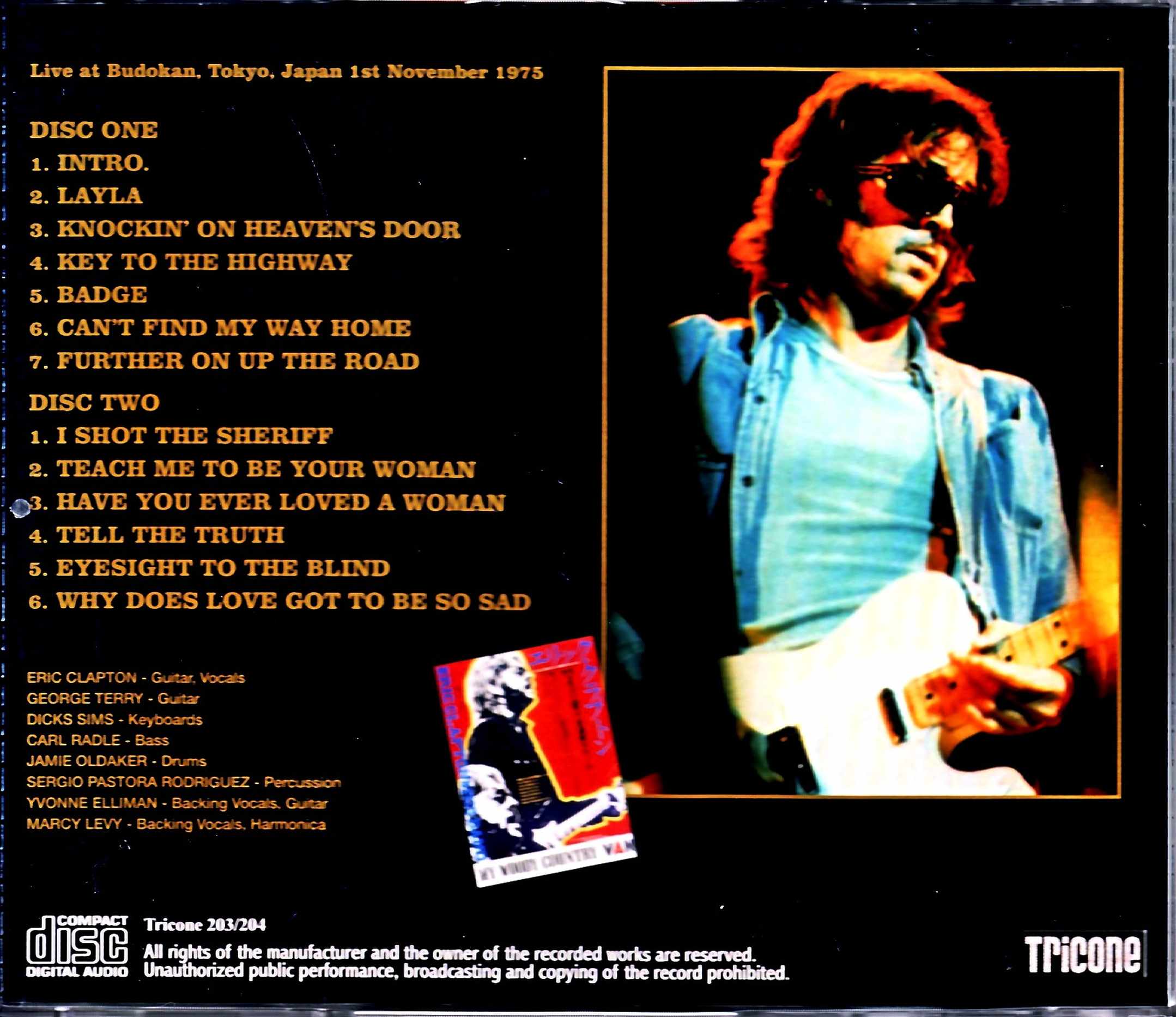

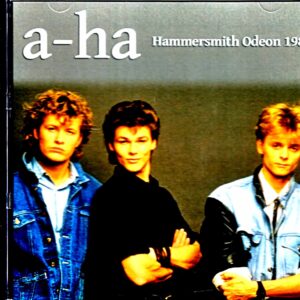
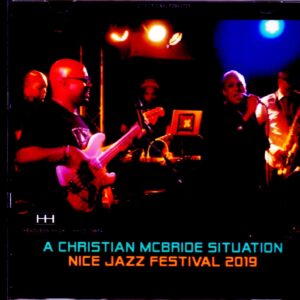
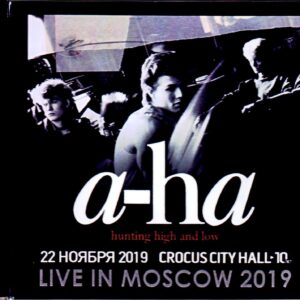
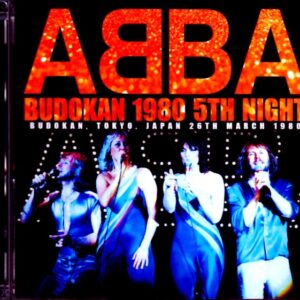
Reviews
There are no reviews yet.